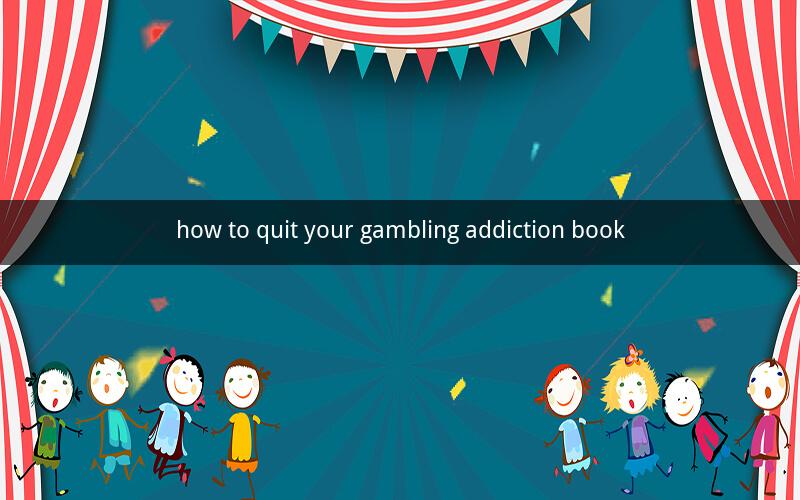
How to Quit Your Gambling Addiction: A Comprehensive Guide
Table of Contents
1. Understanding Gambling Addiction
2. The Impact of Gambling Addiction
3. Identifying the Signs of a Gambling Problem
4. The Importance of Seeking Professional Help
5. Strategies for Quitting Gambling
- Setting Clear Goals
- Developing a Support System
- Identifying Triggers and Avoiding Them
- Coping with Cravings
- Creating a Sober Routine
6. Alternative Activities to Replace Gambling
7. The Role of Technology in Quitting Gambling
8. The Importance of Self-Reflection and Learning from Mistakes
9. The Journey to Recovery
10. Maintaining Sobriety
1. Understanding Gambling Addiction
Gambling addiction, also known as compulsive gambling, is a behavioral disorder characterized by an inability to control the urge to gamble despite negative consequences. It is a complex condition that can affect individuals of all ages, backgrounds, and socioeconomic statuses. Understanding the nature of gambling addiction is the first step towards overcoming it.
2. The Impact of Gambling Addiction
Gambling addiction can have severe consequences on an individual's life, including financial, emotional, and social repercussions. It can lead to financial ruin, strained relationships, legal problems, and even mental health issues such as depression and anxiety.
3. Identifying the Signs of a Gambling Problem
Recognizing the signs of a gambling problem is crucial for seeking help. Common signs include:
- Feeling the need to gamble more and more to achieve the same thrill
- Lying to family and friends about gambling activities
- Using gambling as a way to escape problems or negative emotions
- Neglecting responsibilities at work, school, or home
- Borrowing money or selling possessions to fund gambling habits
4. The Importance of Seeking Professional Help
Professional help is essential for overcoming gambling addiction. Therapists, counselors, and support groups can provide the necessary tools and support to help individuals break free from their addiction.
5. Strategies for Quitting Gambling
5.1 Setting Clear Goals
The first step in quitting gambling is to set clear, achievable goals. This may involve setting a specific amount of money to be saved or a specific time frame for not gambling.
5.2 Developing a Support System
A strong support system can make a significant difference in the recovery process. This may include family, friends, or support groups dedicated to helping individuals overcome gambling addiction.
5.3 Identifying Triggers and Avoiding Them
Identifying triggers that lead to gambling, such as certain places, people, or emotions, and avoiding them can help prevent relapse.
5.4 Coping with Cravings
Cravings are a common challenge in the recovery process. Learning healthy coping mechanisms, such as exercise, meditation, or engaging in hobbies, can help manage cravings.
5.5 Creating a Sober Routine
Establishing a routine that does not include gambling can help maintain sobriety. This may involve scheduling activities that promote well-being and fulfillment.
6. Alternative Activities to Replace Gambling
Finding alternative activities to replace gambling can help fill the void left by this addictive behavior. These may include sports, arts, music, or volunteering.
7. The Role of Technology in Quitting Gambling
Technology can be both a tool and a trigger for gambling addiction. Utilizing apps and resources that help manage gambling behavior can be beneficial, as can avoiding gambling-related websites and apps.
8. The Importance of Self-Reflection and Learning from Mistakes
Self-reflection and learning from past mistakes are essential for personal growth and recovery. This involves acknowledging the impact of gambling addiction on oneself and others and making a commitment to change.
9. The Journey to Recovery
Recovery from gambling addiction is a journey that requires patience, perseverance, and resilience. It is important to remember that setbacks are a part of the process and that progress is often incremental.
10. Maintaining Sobriety
Maintaining sobriety requires ongoing effort and commitment. This involves staying connected with a support system, continuing to learn about gambling addiction, and adapting to life without gambling.
Questions and Answers
1. What are the main signs of a gambling problem?
- The main signs include feeling the need to gamble more, lying about gambling, using gambling as an escape, neglecting responsibilities, and borrowing money to fund gambling habits.
2. How can I seek professional help for gambling addiction?
- You can seek help from therapists, counselors, or support groups specializing in gambling addiction.
3. What are some effective strategies for quitting gambling?
- Effective strategies include setting clear goals, developing a support system, identifying triggers, coping with cravings, and creating a sober routine.
4. How can I find alternative activities to replace gambling?
- You can explore sports, arts, music, or volunteering as alternative activities.
5. What role does technology play in quitting gambling?
- Technology can be both a tool and a trigger. Utilizing apps and resources to manage gambling behavior and avoiding gambling-related websites can be beneficial.
6. Why is self-reflection important in the recovery process?
- Self-reflection helps individuals acknowledge the impact of their addiction and commit to change, promoting personal growth and recovery.
7. How can I maintain sobriety after overcoming gambling addiction?
- Maintaining sobriety involves staying connected with a support system, continuing to learn about gambling addiction, and adapting to life without gambling.
8. What are some common triggers for gambling addiction?
- Common triggers include stress, boredom, social situations, and emotional distress.
9. How can I cope with cravings for gambling?
- Coping with cravings involves engaging in healthy activities, such as exercise, meditation, or hobbies, and seeking support from friends or family.
10. What is the importance of setting clear goals in the recovery process?
- Setting clear goals provides a sense of direction and purpose, helping individuals stay focused on their recovery journey.